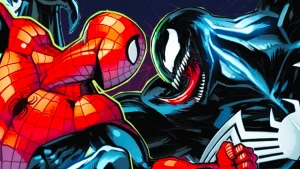The Hulk is one of Marvel’s most beloved characters, a foundational figure whose blend of monstrous rage and tragic humanity has captivated audiences for decades. Despite his popularity, the character has had a complicated journey in the Marvel Cinematic Universe. So far, distribution disputes have prevented Marvel Studios from producing a new solo film, leaving the Emerald Giant (Mark Ruffalo) without a central franchise of his own. Nevertheless, the Hulk is an original Avenger in the MCU and has remained a constant presence, accumulating a significant number of appearances across the sprawling saga, smashing his way to victory every time Earth is in danger.
If we count the movies and television shows where the Hulk played a substantial role, the list is quite impressive. His journey includes The Incredible Hulk, The Avengers, Avengers: Age of Ultron, Thor: Ragnarok, Avengers: Infinity War, Avengers: Endgame, She-Hulk: Attorney at Law, What If…?, and, most recently, Marvel Zombies. The character has also made brief appearances in the post-credit scene of Captain Marvel and in archival footage seen in Loki. In addition, the Hulk’s puny alter ego, Bruce Banner, appears in post-credit scenes for Iron Man 3 and Shang-Chi and the Legend of the Ten Rings. With the green goliath set to be unleashed again in the upcoming Spider-Man: Brand New Day, it is clear his story is far from over. All this screen time has given the Hulk plenty of opportunities for some truly incredible feats of power.
The final battle of The Incredible Hulk in Harlem pitted the monster against a more refined and ruthless version of himself. The Abomination, the result of Emil Blonsky (Tim Roth) combining the super-soldier serum with Banner’s (Edward Norton in the Hulk’s first appearance) gamma-irradiated blood, was a creature of pure malice and tactical thinking. He was stronger, faster, and smarter than the early-stage Hulk, and he took a sadistic pleasure in proving it.
The initial phase of their fight is a brutal beatdown, with the Abomination effortlessly countering Hulk’s attacks and leaving him a wounded mess. Yet, this is where the Hulk’s true power is revealed. Fueled by his boundless rage and a desire to protect innocent lives, he pushes past his limits, growing stronger until he can overwhelm his opponent. The feat becomes even more impressive in its closing moments, as Hulk makes a conscious choice to stop short of killing Blonsky, proving that a sliver of humanity exists within the beast.
During the Battle of New York in The Avengers, the heroes found themselves completely outmatched by the Chitauri invasion. The arrival of the Leviathans, massive armored space whales, signaled that the fight was nearly lost. These colossal creatures tore through skyscrapers with ease, showing that the Avengers’ efforts to save New York City were doomed. Then, the Hulk arrived. In one of the most memorable moments of the entire film, he confronts a Leviathan head-on. With a single, perfectly timed punch, he stops the creature’s momentum dead in its tracks, proceeding to rip through its thick armor plating and tear it apart from the inside. This was the first time the MCU showcased the Hulk’s raw power on a truly cosmic scale, establishing him as the team’s ultimate weapon.
When Scarlet Witch (Elizabeth Olsen) invades Bruce Banner’s mind in Avengers: Age of Ultron, she unleashes a version of the Hulk more terrifying than any seen before. His rampage through Johannesburg was so catastrophic that Tony Stark (Robert Downey Jr.) was forced to deploy his ultimate contingency plan: the Hulkbuster armor. This suit was a marvel of engineering, a massive machine specifically designed for the sole purpose of containing and neutralizing the Hulk.
The battle that followed was a titanic clash that leveled city blocks. The armor was equipped with incredible weaponry and had replacement parts floating nearby to repair any damage. It did not matter. The Hulk’s rage was limitless, and he systematically dismantled the suit piece by piece. He tore through its reinforced frame and overpowered its hydraulic systems, proving that even a genius’ best-laid plans were no match for his fury.
After being lost in space, the Hulk established himself as the undefeated champion of the Grandmaster’s (Jeff Goldblum) Contest of Champions on the planet Sakaar. He was a celebrated gladiator, a king in his own right, until a familiar face arrived to challenge his reign. His fight against his “friend from work,” Thor (Chris Hemsworth), was a spectacular affair that firmly established Hulk’s place in the MCU’s top tier of powerhouses. He fearlessly weathered blows from the Asgardian prince, delivering a savage beating that left the God of Thunder reeling. The battle demonstrated that Hulk was capable of matching the strength and durability of a literal god. Even after Thor awakened his full lightning abilities, the Hulk still stood his ground. Unfortunately, the fight was cut short by the Grandmaster’s interference, leaving the outcome uncertain.
The final battle for Asgard’s survival in Thor: Ragnarok was a chaotic scene filled with gods and monsters. One of the most fearsome battlers was Fenris, the giant Asgardian wolf loyal to Hela (Cate Blanchett). The creature was a mythological beast of immense size and power that could easily tear through Asgard’s defenses. Fortunately, when the Hulk arrived on the Rainbow Bridge, he immediately leaped into a primal brawl with the massive wolf. The two traded devastating blows in a contest of strength that showed the might of two untamed creatures. The fight culminated with the Hulk lifting the enormous beast over his head and slamming it down. He then punched the wolf so hard that it was sent flying off the edge of Asgard and into the cosmic void.
Following the Avengers’ successful Time Heist in Avengers: Endgame, the team faced the monumental task of using the Infinity Stones to undo the Snap. The immense gamma radiation emitted by the stones meant that wielding them would be fatal to almost any living being. It was Bruce Banner, now in his intelligent Smart Hulk form, who volunteered for the mission. He reasoned that since the stones’ energy was primarily gamma, his own gamma-irradiated body was uniquely suited to withstand the surge. The power of six Infinity Stones almost killed the Mad Titan Thanos (Josh Brolin), yet the Hulk managed to endure it. He successfully performed the snap, bringing back half of all life in the universe. While the act crippled his arm, his survival was a testament to the Hulk’s durability.
The ultimate display of the Hulk’s power came in the apocalyptic reality of the Marvel Zombies series. In this world, after a zombified Thanos arrived on Earth with the Infinity Gauntlet, the surviving heroes fought a desperate final battle. In the ensuing chaos, the Infinity Stones were shattered, unleashing a wave of raw cosmic energy that threatened to obliterate the planet. The Hulk was the only being powerful enough to absorb and contain this catastrophic force. Unlike in Endgame, where he channeled the stones’ power through a specially designed gauntlet, here he contained their unfiltered energy directly within his own body. This incredible feat transformed him into a living anchor for the fundamental forces of the universe, demonstrating that the Hulk is one of the few vessels in the multiverse capable of housing the raw power of creation itself.
What other incredible Hulk moments do you think belong on this list? Leave a comment below and join the conversation now in the ComicBook Forum!
The post The Hulk’s 7 Most Impressive Feats of Power in 9 MCU Appearances, Ranked appeared first on ComicBook.com.




